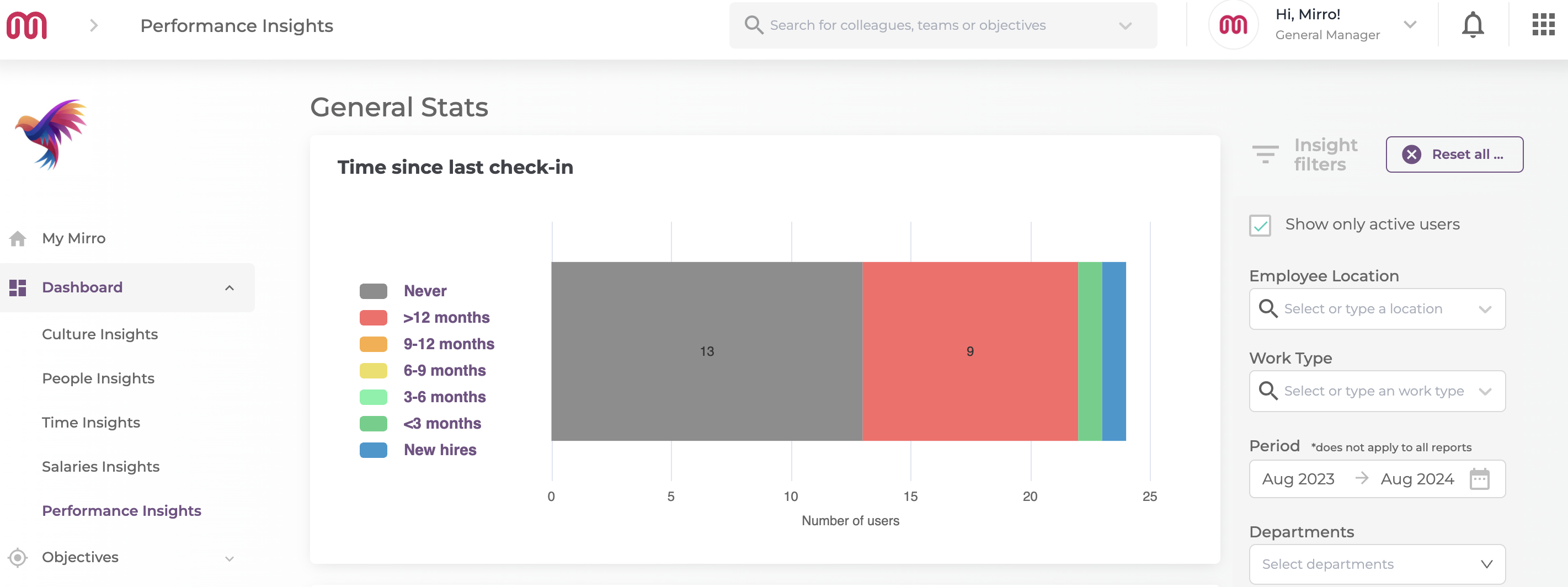SECTION
The Benefits of Performance Management: Driving Productivity and Engagement

Listen to this article:
Performance management has evolved from a once-a-year exercise of performance reviews into a dynamic, continuous process integral to modern business strategy. Long gone are the days of the traditional, annual performance reviews. Today’s fast-paced nature of the modern workplace needs a more agile and continuous approach to evaluating performance.
This major shift reflects the need for ongoing real-time feedback, clear goal setting, regular check-ins, and ongoing development. These elements are much needed to keep pace with the rapidly changing business landscape.
Traditionally, performance management was often seen as a cumbersome administrative task, focused more on compliance than actual improvement and growth. Today, it has become a vital tool for boosting performance management and employee engagement.
This article explores the numerous benefits of performance management, including its impact on employee productivity, goal alignment, talent development, employee engagement, organizational agility, and more. Additionally, we will touch on the role of modern performance management tools and systems that have revolutionized how businesses approach employee performance.
TL;DR? Performance management aligns people and strategy for better outcomes. Calculate your potential savings with our ROI calculator to instantly prove the business value of investing in such a process.
What is performance management?
Performance management is the process of engaging with employees to assess their contributions, strengths, and weaknesses. Rather than focusing on purely evaluating performance, an effective performance management process aims to help people grow and develop.
Traditionally, performance management was viewed as a yearly process. However, the evolution of the modern workplace has demonstrated that annual performance reviews are ineffective because they attempt to do too much in a single session and cost companies a lot of time and money.
Studies have shown that only 8% of businesses think their traditional performance management method adds value to their company. Moreover, 75% of employees believe yearly reviews are unfair. The flexible, fast-paced environment of the modern workplace is well-suited for more regular reviews, and it's far simpler to assess performance during the last few months as opposed to a whole year.
Why is performance management critical in today’s business landscape?
Performance management is essential because it aligns individual employee performance with broader organizational goals, contributing to high-performing and productive teams. By using performance management systems, companies can provide real-time feedback, track progress, and make data-driven decisions that enhance productivity and agility.
👉 Continue reading: Importance of Performance Management: A Comprehensive Guide for Executives
The top benefits of performance management
1. Enhancing employee productivity
One of the most significant benefits of performance management is its ability to drive employee productivity. At the core of this process is setting personalized goals tailored to each employee's strengths, weaknesses, and career aspirations. When people have clear, specific, measurable goals, they are more motivated and focused, enhancing productivity. These clear goals also help them understand how their work contributes to the organization's success.
Continuous feedback is another critical component of performance management that directly impacts productivity. Unlike traditional annual reviews, when employees receive feedback from their manager only once a year, continuous performance management allows for real-time feedback, helping people stay on track and address issues. This approach involves an ongoing dialogue between managers and team members, which fosters a culture of continuous improvement.
Data-driven decisions play a crucial role in identifying productivity bottlenecks. Managers can pinpoint challenges hindering productivity by leveraging performance data and implementing targeted interventions. For example, you might notice a particular team consistently missing deadlines. By analyzing performance data, you can identify the root cause—a lack of resources, unclear goals, or insufficient training—and take steps to address it.
2. Aligning employee performance with organizational goals
An effective performance management system can be the clear link between employees' daily activities and the company's strategic objectives. This alignment ensures that everyone works towards common goals, which are essential for achieving the desired business outcomes. But this alignment can't happen overnight; you need a thorough performance management plan to drive results and keep your team happy and engaged.
One effective framework for goal alignment is OKRs (Objectives and Key Results). OKRs provide a structured approach to setting and communicating organizational goals, ensuring that everyone understands the company’s priorities and how their efforts contribute to these goals. This transparency and clarity are vital for maintaining focus and motivation among team members. Studies show that companies who manage objectives quarterly generate 30% higher returns than organisations who address them annually.
Another benefit of performance management systems is that they ensure the alignment between individual performance and organizational goals. Through constant check-ins, managers can track progress, provide feedback, and adjust goals to remain relevant and aligned with the company's strategic direction. When performance is aligned with organizational goals, it leads to improved business outcomes, such as increased revenue, market share, and customer satisfaction.
For example, Google is well-known for using OKRs to align its employees' efforts with its ambitious goals. By setting clear objectives and measurable key results, Google ensures that all employees, from engineers to sales teams, are focused on the same priorities, which has been a significant factor in the company’s success.
👉 Continue reading: The Crucial Role of Goal Alignment in Performance Management
3. Identifying and developing top talent
A continuous performance management process allows leaders to have a holistic view of people's performance and HR and L&D departments to design career development plans and reskilling and upskilling initiatives.
One key method for identifying top talent is 360-degree feedback, which gathers feedback from multiple sources, including peers, mentees, and managers, to provide a well-rounded view of an employee's performance.
The impact and benefits of performance management on employee retention cannot be overstated. When employees see that their development is being taken care of and that there are clear pathways for career growth, they are more likely to stay with the company. Moreover, effective performance management systems identify and reward high performers properly, which can be a crucial motivator for retention.
For instance, IBM has successfully used performance management to identify and develop talent through its Leadership Development Program, significantly reducing turnover among high-potential employees.
4. Boosting employee engagement and retention
A well-structured performance management process creates a positive and supportive work environment where people feel valued, recognized, and motivated to perform at their best. This, in turn, leads to higher levels of engagement, which is correlated with higher retention rates.
Continuous feedback and recognition are the most effective ways to drive performance management and employee engagement. Ongoing and constructive feedback helps people understand how their work is perceived and where to improve, while recognition reinforces positive behaviors and achievements. This constant communication boosts employee morale and fosters a culture of continuous improvement.
Creating a thriving workplace culture is another critical factor in improving employee engagement and retention. Performance management systems that encourage transparency, fairness, and growth opportunities contribute to a workplace where everyone feels respected and empowered. Employees who are engaged and satisfied with their work environment are likelier to remain loyal to the organization.
Companies like Salesforce have demonstrated the effectiveness of these performance management strategies by maintaining high levels of employee engagement and retention through their comprehensive performance management programs.
5. Enhancing organizational agility
In today's fast-paced business environment, organizational agility is essential for staying competitive. One of the greatest benefits of the performance management system is that it helps organizations remain agile by providing the tools and insights needed to identify and respond to performance issues quickly. Through data-driven insights and continuous monitoring, organizations can make informed decisions that enhance their ability to adapt to changing conditions.
Performance management systems can also help reduce biases and establish a foundation for fair evaluations based on merit rather than favoritism. These systems track several performance indicators presented as user-friendly dashboards that help managers draw conclusions and act on them.
For example, Mirro's performance management software provides performance dashboards and insights, such as the time since the last check-in, review duration, check-in frequency, and time to finalize reviews.
 . Mirro's performance insights dashboard
. Mirro's performance insights dashboard6. Strengthen manager-mentee relationship and reduce micromanagement
Lastly, another critical benefit of performance management systems is fostering manager-mentee relationships, reducing micromanagement, and increasing autonomy and accountability. An agile performance management system promotes transparency, open communication, and constructive feedback, which are the core elements of building strong, authentic relationships.
Effective performance management occurs only when managers actively participate and take the time to learn about each team member's goals and challenges. It goes beyond evaluating performance and examining metrics. This system allows for deeper relationships, a commitment to helping people reach their full potential, and a focus on crucial indicators of a happy workplace, such as satisfaction and morale.
Moreover, when performance check-ins occur frequently, managers can have an overview of the employee's trajectory without micromanaging. These regular conversations build more trust between managers and mentees, allowing everyone to maintain their autonomy.
TIP: Performance review software like Mirro offers comprehensive tools, user-friendly design, continuous feedback mechanisms, and advanced analytics that help streamline the performance management process.
Ready to enjoy the benefits of a performance management system?
The benefits of performance management are extensive and critical to achieving long-term business success. Investing in a robust performance management system is not just about tracking performance—it’s about creating a culture of continuous improvement, where every employee understands their role in achieving the company’s strategic objectives.
As businesses continue to evolve, the future of performance management and employee engagement will likely be shaped by AI-driven insights and increasingly sophisticated tools that allow for even more precise and personalized performance tracking.
Frequently Asked Questions
-
What are the key benefits of implementing a performance management system?
-
How does performance management improve employee performance and engagement?
-
How can performance management align with our company’s strategic objectives?
Implementing a performance management system provides several key benefits, including enhanced employee productivity, improved communication between managers and employees, and a clear framework for setting and achieving goals. It also helps identify areas for development and provides regular feedback, fostering continuous improvement and career growth.
Performance management improves employee performance and engagement by setting clear expectations, offering continuous feedback, and recognizing achievements. This process helps people understand their role in the organization, stay motivated, and remain aligned with company goals, ultimately leading to higher levels of commitment and productivity.
Performance management aligns with a company's strategic objectives by ensuring that individual goals are directly linked to broader organizational targets. Through regular reviews and goal-setting processes, team members can focus on activities that drive the company's mission forward, creating a unified direction and fostering a culture of accountability and achievement.





